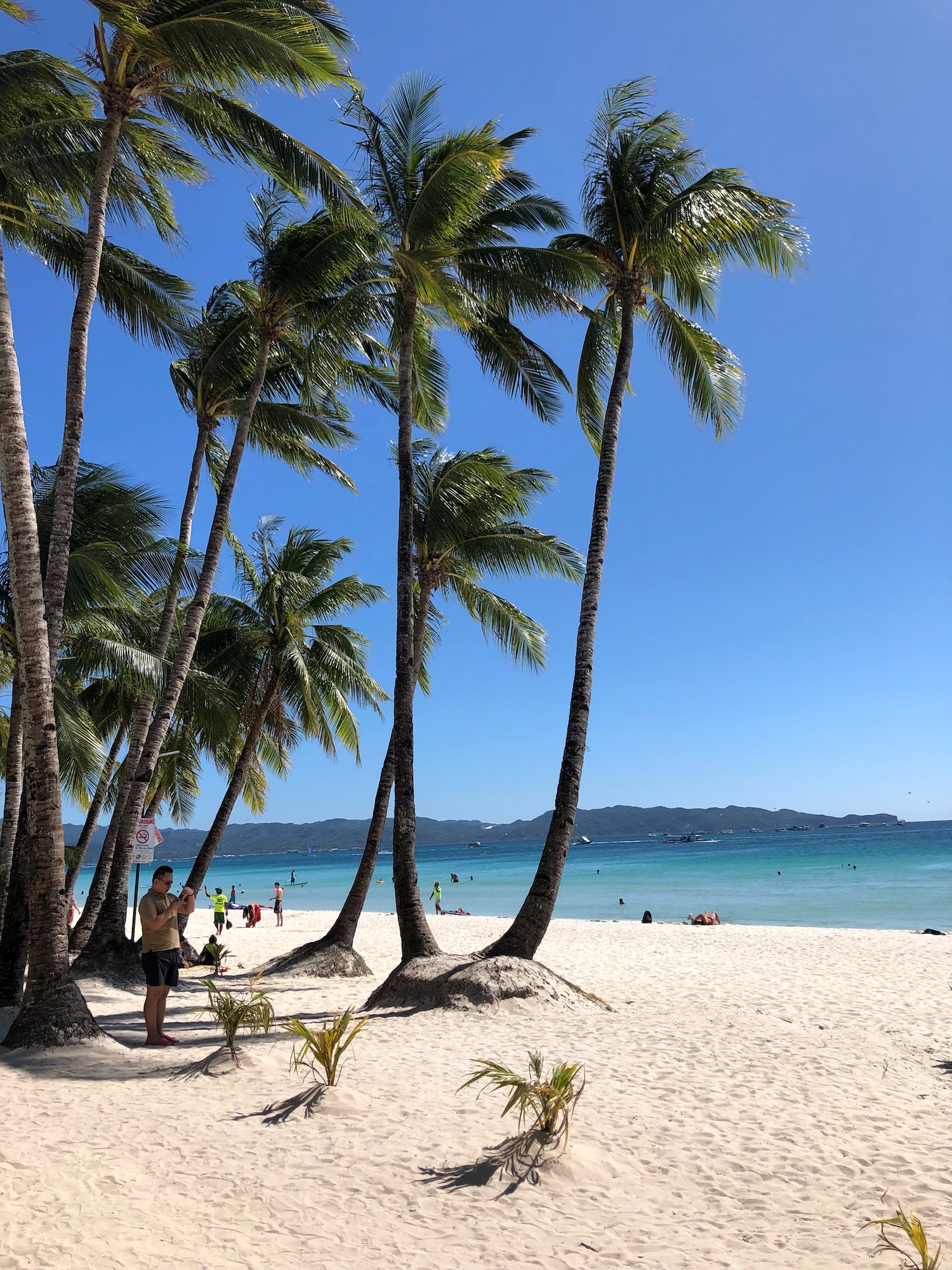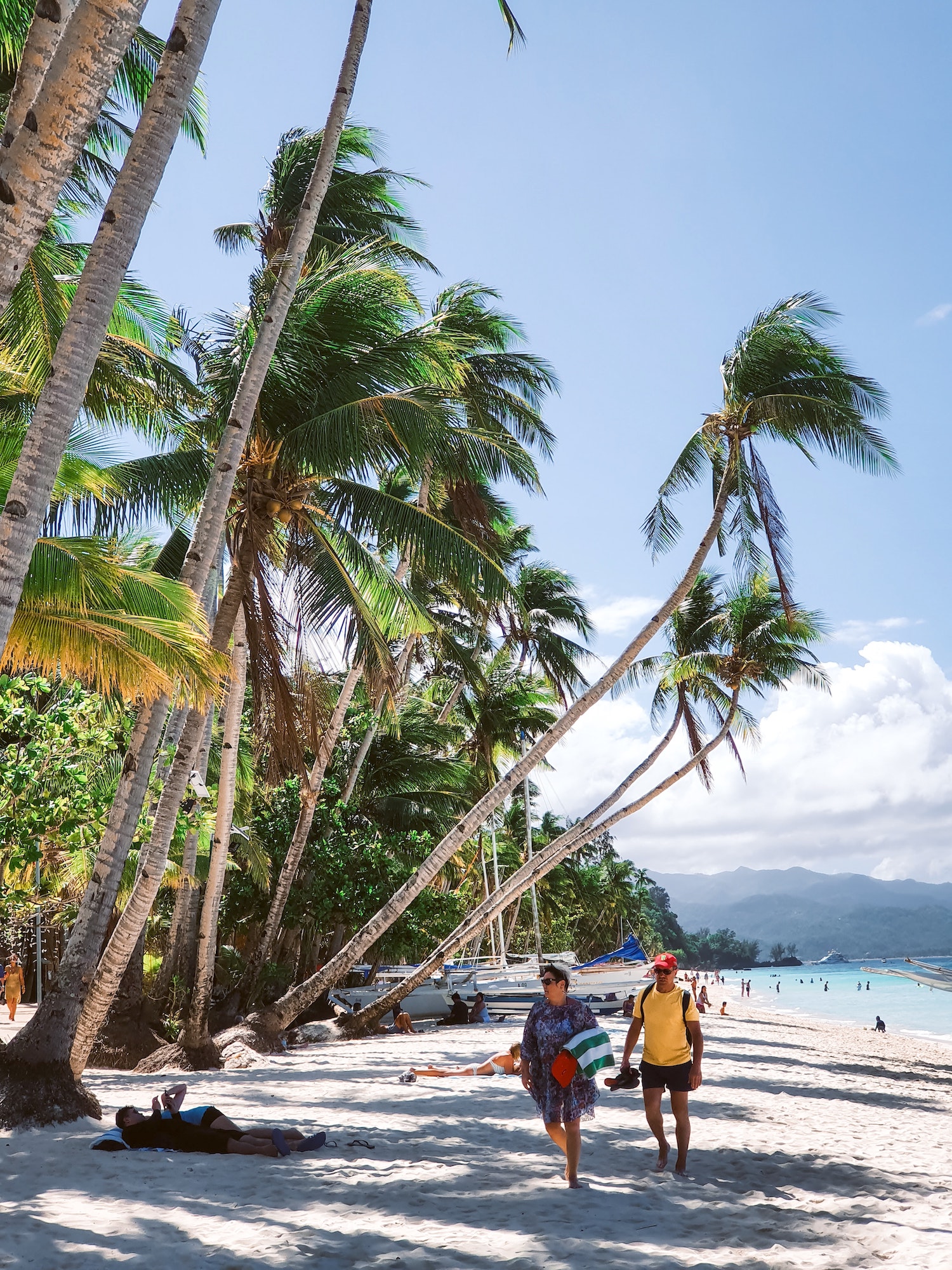In the highly muddled politics and logistics of the impending Boracay closure, the single concern that seems to ring clearly is this: the loss of jobs so drastic and expansive, it’s practically a state-ordered suspension of the island’s economic activity.
The total shutdown of Boracay was ordered upon the recommendation of three government departments that cited the disturbing environmental state of the island as reason enough to impose a six-month closure. The president, who approved of the proposal on Apr. 4, was once quoted as calling the 1,032-hectare island “a cesspool.”
Is it, really though?
Consider this: According to the Department of Environment and Natural Resources and the Boracay Island Water Company (BIWC), only 66 percent or 383 out of 578 of BIWC’s business customers are connected to the sewerage system. This means that a substantial portion of the establishments’ wastes go straight to Boracay’s beaches.
The data prove that a considerable number of business owners has been far from diligent in complying with environmental regulations, but then again, the dissenting arguments of many stakeholders—that Boracay is a place that thrives mainly on tourism, for instance—speak just as much reason.
According to the Department of Environment and Natural Resources and the Boracay Island Water Company, only 66 percent or 383 out of 578 of BIWC’s business customers are connected to the sewerage system.
We suppose that the intended effect of that particular argument resembles more closely a necessary reminder than a statement of the obvious. That is, to be reminded of Boracay as an important tourist spot is to understand the extent of its reliance on tourism and what exactly is at stake if this relationship were to be severed.
What’s at stake in Boracay?
In 2017, Boracay hosted about two million tourists and earned P56.15 billion in tourism receipts according to data from the Department of Tourism (DOT). It has also produced 17,737 jobs in the tourism industry—the highest in Western Visayas according to the DOT. And that figure doesn’t even include the 11,289 unregistered workers on the island.
The shutdown will directly affect over 36,000 jobs, which is a possibility that becomes even more alarming if you take into account the island’s increasing population growth rate. In 2018, the population of Boracay is projected to increase by nine percent to 56,444 from 51,793 last year.

It also seems like the six-month closure period couldn’t have been timed worse as it encompasses LaBoracay, a summer party event that attracts thousands of people every year. So when business owners and workers cite these numbers—when non-profit groups like the Boracay Foundation Inc. vie for more efficient ways to rehabilitate the island—they are pointing to the thousands of families that will be put at serious financial risk; they are expressing substantiated dread towards serious economic losses.
But while the island’s local economy runs the risk of experiencing a recession, the impending shutdown is believed to have minimal effect on the nation’s economy. Reynaldo Cancio, the director for national policy and planning in the National Economic and Development Authority (NEDA) says that closing Boracay will have little to no effect on the country’s gross domestic product (GDP).
“The overall picture we see is even if the ban extends to up to six months, at the macro level it’s not going to be significant—the most is something like 0.1 percent of GDP,” he told reporters on Apr. 3. But what does this matter to Boracay locals? What can an island that subsists mostly on tourism do in the face of unemployment on such a great scale?
The F&B and hospitality industries during the Boracay closure
What the harrowing prospect of having no tourist arrivals for six months means is that food and hospitality business owners and workers will have no choice but to scramble for ways to look for other sources of income. “They will just have to change jobs for the time being,” Presidential Spokesperson Harry Roque said at a press briefing on Apr. 5.
And so perhaps it’s only fitting that reactions from these parties have mostly been (reasonable) expressions of indignation.
“Imagine all the people who work in the island. They have families who live in Caticlan, Kalibo, Iloilo, and even Bicol. How can they support their families in these six months? How can stakeholders support their staff and businesses if establishments can’t operate?” says Kalel Chan, the chef behind Cha Cha’s Boracay.
Kalel Chan, the chef behind Cha Cha’s Boracay, is “angered and frustrated” over the six-month shutdown. “Imagine all the people who work in the island. They have families who live in Caticlan, Kalibo, Iloilo, and even Bicol. How can they support their families in these six months? How can stakeholders support their staff and businesses if establishments can’t operate?”
Josh Boutwood, who grew up in Boracay and was the chef and owner of the now defunct Alchemy, points to the island’s reliance on both tourism and the summer period. “Boracay relies solely on income from visitors. There are no other industries on the island that would support the growing population. The closure is set on Apr. 26. Many like myself were only really making money during the summer period. Those funds would sustain our livelihood throughout the low season.”
These business owners concede to the fact that a rehabilitation is necessary. They recognize that the island is ill, but they also strongly believe that there are other more efficient ways of doctoring it.
“We are all for the environment. What we are waiting for are plans so that we can all help in saving Boracay. Not all establishments are violators, and so I think what should be done is to stop all violators from operating, and demolish establishments that built structures on wetlands, rock formation, and mangroves,” says Chan.
Boutwood agrees that there will surely be some advantages to the rehab, but asks: “What will one do in the meantime?”
What now?
One thing that proves to be perhaps as equally daunting as the impending closure itself—and what has received the ire of a lot of business owners—is the lack of a clear plan of action on the administration’s part.
“The government has not given a plan of action. No master plan for the rehab and no assurance of what progress will be made within those six months. If I were to still have my restaurant there, I would be horrendously worried. I honestly believe that majority of locally owned establishments will not cope,” says Boutwood.

While the administration has set aside P2 billion in calamity funds to help workers who will be displaced, and agencies such as the Department of Labor and Employment has promised to provide 5,000 jobs and financial aid to workers, at the time of writing, the government has yet to release the official guidelines and detailed action plan on the closure.
Meanwhile, hotels, airlines, and other businesses in the island have started laying off workers and drafting their own “interim plan” while they await official instructions. However, the latest word from the president regarding the island’s fate is far from what anyone expected.
On Apr. 10, he declared the 1,032-hectare resort island an agrarian reform area in reaction to allegations that the government will allow casinos to be built on the island. “I’ll place it under [the] land reform [program]. It would be better. I will tell you now, ‘I will give it to farmers. I will give them tractors.”
Residents have since expressed disbelief at the statement, with one telling the Inquirer: “There are no farms here, I plant vegetables on our rooftop.”





